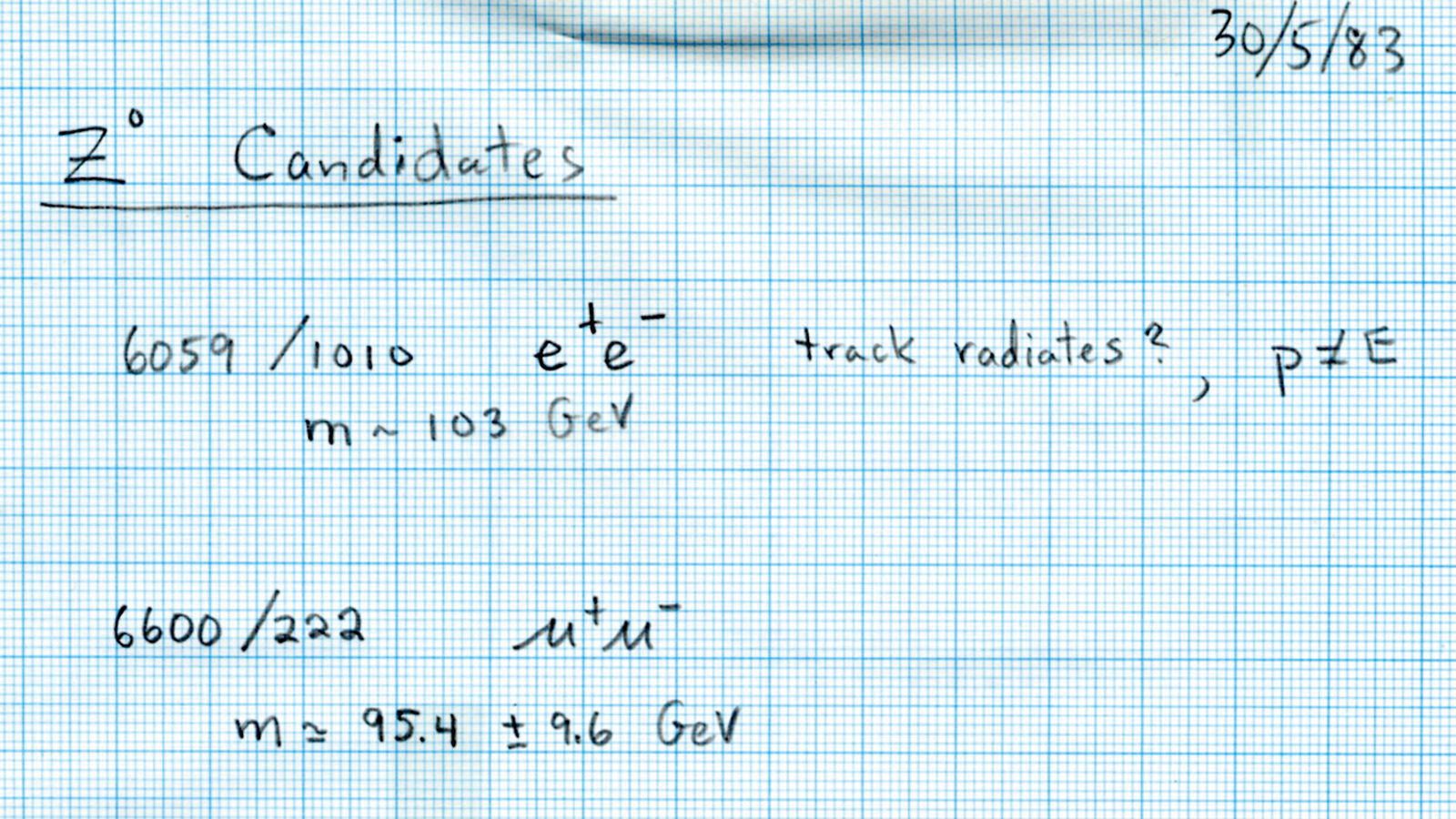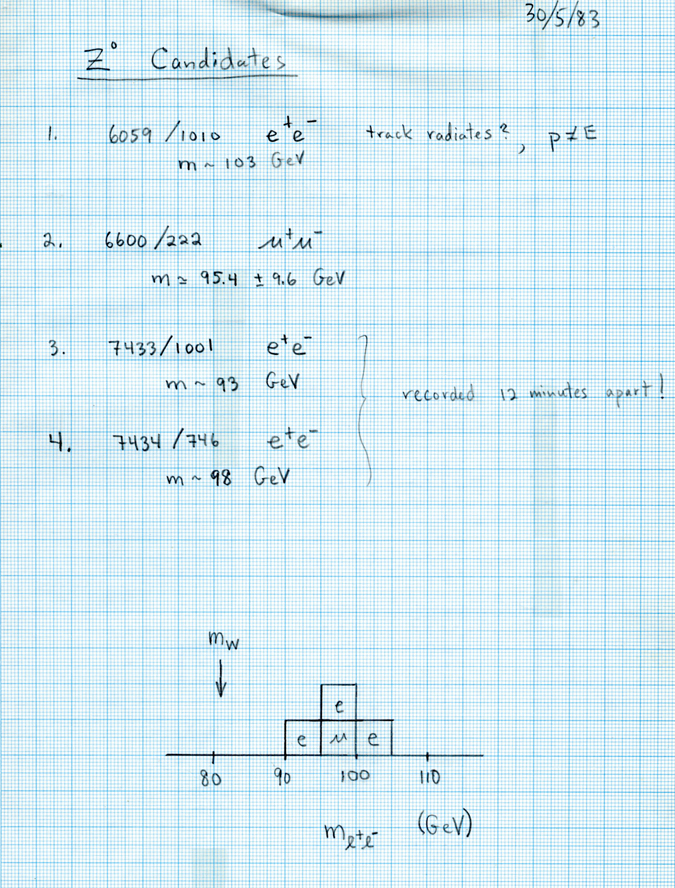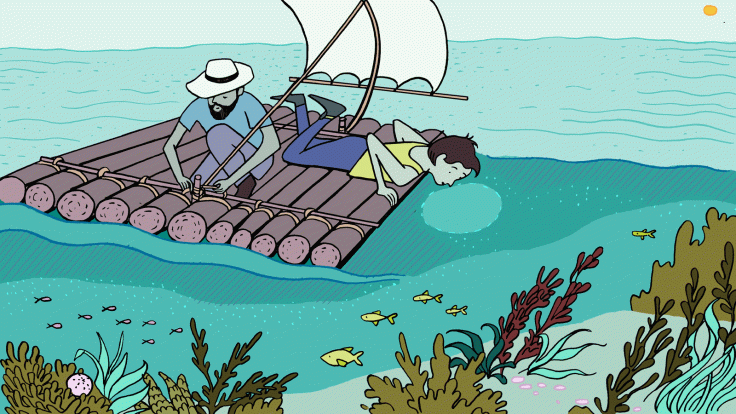James Rohlf, an assistant professor at Harvard University, was based at CERN and led the analysis of the Z boson signals for UA1. This page from his personal logbook shows the summary of the first four events from UA1 that physicists thought represented the Z. The UA2 collaboration observed the Z soon after.
The first event is annotated with track radiates because the signal was an unusual, though possible, way for Z to appear. The second event, based on seeing muons in the detector, provided a vital confirmation and check on the other events, which were based on observing electrons from the decay of the Z. The muon detection systems were independent of the electron detection and so this crosscheck carried a lot of weight.
Rohlf comments that the notation recorded 12 minutes apart! was a sign of huge surprise as the first few events had been collected only over weeks of running, so one event right after another was unexpected.
The chart drawn here was reproduced in the paper in Physics Letters B in July 1983 announcing the discovery of the Z. Carlo Rubbia and Simon Van der Meer won the Nobel Prize in Physics in 1984 for their contributions to the discovery of both the W and Z bosons.








